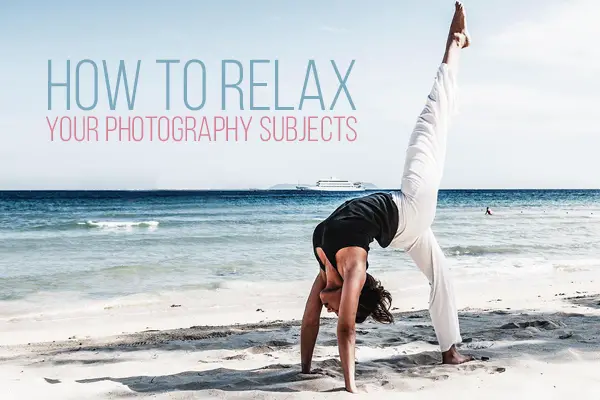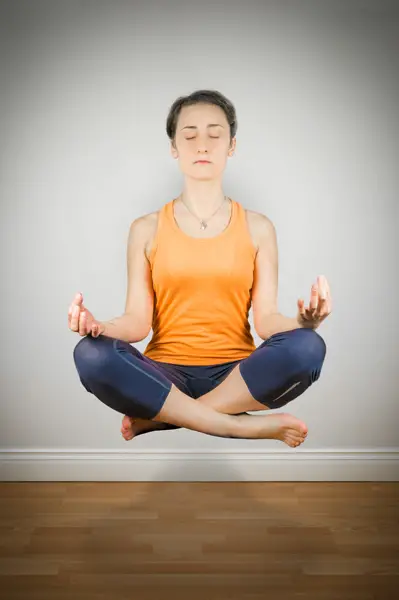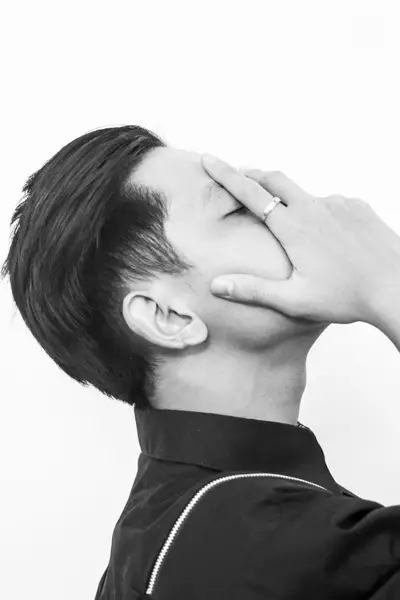Do you ever pull out your camera and point it towards your friends, just for the thrill of watching them tense up? Or is that just this pseudo-sadistic guy? 🙂 There’s something about the dark depths of a camera lens pointing in your direction that can intimidate even the most seasoned, confident individuals. If you’re a photographer trying to capture their essence and tell a story about your subject, then this lens aversion can really make your job difficult.

Unfortunately, helping photography subjects relax isn’t as easy as following a series of technical steps. I can’t just teach you to do this, that and this other thing, then boom! You’re a people-relaxing expert, and your photos will rule. Each person is a little different, and what calms one person will just irritate another.
Ahhh, people. 🙂
So this post is more about inspiring you to start learning the subtle-yet-complex art of understanding what you need to do to chill even the jumpiest photography subject. Make no mistake either: Being skilled with people is as important as learning composition, lighting and all the other technical jazz you need to know to take fantastic photos.

Fortunately, you were built for this. Aristotle’s quote, “Man is by nature a social animal,” is true. Even if you consider yourself shy, within you is a natural ability to connect with the people around you. It just takes practice. Then, when you do make that connection, relaxation happens on its own.
It’s understandable why people would cringe in front of the lens too. No one wants to be judged. And most people are painfully aware of their physical flaws. Maybe their hair is getting a little thin, their belly is a bit pudgy, or their skin isn’t as clear as they’d like…what will people think?! Heck, even the most beautiful people in the world are extensively Photoshopped before their images are used in the mainstream media.
But with the tips below, you can help your subjects learn to relax and be themselves in front of your lens.
1. See Each Person’s Beauty

People will relax with you when they feel beautiful and appreciated in your presence. You could fake it, if you’re good at that sort of thing. Myself, I’m not good at acting, so whenever I’m working with a person, I look for some aspect of them that I genuinely think is beautiful.
I don’t photograph models either, so with some people, it is tough. I, too, am bombarded with images of human perfection constantly. But with a little practice, you’ll be able to find beauty in the subtlest features and gestures.
2. Blabber, Ask Questions or…

For some photographers, they can talk on and on, and these words fill the air, preventing self-conscious thoughts from creeping in. Sort of like that conversation in the movie, Pulp Fiction, about “uncomfortable silences.”
“Don’t you hate that? Uncomfortable silence. Why do we feel it’s necessary to talk about bulls*** in order to feel comfortable?”
However, I’m not a talker, so that’s never worked for me. However, I am genuinely curious about people, so I use that. I ask questions focusing on subjects that a person is passionate about, and I try to get them to talk. When they light up a little, then I know I’ve hit on the right topic.
For you, maybe talking consistently will be your thing. Maybe it’s asking questions. Or maybe you’ll make up your own unique strategy. Either way, go with a strategy you’re naturally good at.
3. Relax

If you’re relaxed, then your subjects will relax. That’s why you don’t want to try talking a ton, if you’re not a talker. It’ll just be obvious you’re not comfortable, and your subject will mirror that emotion. In fact, our brains are wired to reflect the emotional states of the people around us. Scientists have even found brain cells that imitate the actions of others.
They are called “mirror neurons.” You’ve probably noticed this before. Have you ever been hanging out with a friend who’s stressed, and, even though you’ve been calm all day, now you’re feeling tense?
4. Show Them

When you ask them to pose, don’t just describe what you’re looking for from the safety behind the lens; instead, get in front of the camera and show your subject what you’re talking about. It might even help to be a little goofy, or show them that it doesn’t matter to look a little weird. At least then, they’ll feel good about looking less dorky than you. 😉
5. Tell Them What to Do

Don’t be shy about giving directions. Most subjects want you to tell them what to do. It’s comforting to be following someone who knows what they’re doing. So offer pose suggestions, and go after your vision for the shoot.
Speak clearly and respectfully, saying things like, “That’s great. Let’s try moving your head just a tad to the left,” or “Gorgeous. Now can you move your right hand to the top of your hip bone?”
6. Give Them Something to Do

Give your subject something to do or hold. Be sure it’s something they feel comfortable with. The iconic photographer, Henri Cartier Bresson, took a photograph of the artist Henri Matisse in 1944 when he was sitting in a chair in his home and holding one of his pet birds. Looking at the image, there’s something so natural about the photograph, and maybe it’s because Henri’s holding something he’s so familiar with.
7. Be Aware of Your Mini-Gestures

A downward glance, a subtle sigh or a mild frown can all throw your subject off. The small gestures you make say a lot. Looking down after someone speaks is a signal you’re bored (look to the side instead). If you mutter to yourself, “Oh, no,” even if it’s your own mistake, it could give your subject the impression they are not doing a good job, and they freeze.
Unfortunately, these gestures are often done unconsciously, too. You might even unwittingly be the cause of your subject’s nerves. So practice maintaining a positive frame of mind throughout your shoots. Don’t let anything throw you off. You can even start training now as you talk to people during your daily life. Then in time, you’ll naturally be a “pro people relaxer.” 🙂
Are you struggling with helping your photography subjects relax? If so, and you have a specific question, please ask in the comments below. We’ll try to answer you personally, and maybe your question will inspire another photographer like yourself!









Good article. For corporate headshots, I attempt to engage the subject in conversation for a couple of minutes before I pick up the camera, to break the ice as it were. Generally people respond well to this, but still sometimes they freeze. Some people are just plain uncomfortable regardless of the amount of charm, cajoling, levity, comedy I try to inject bits tough. Portrait/beauty/fashion is generally different and easier though since the subject is complicit and actually *wants* to be photographed. Different ball game altogether, a lot easier than reluctant corporate types
Hey Hugh, I hear you about warming people up first. And how some people are tough… heck, maybe it’s even impossible for some people look completely natural. I know for myself it’s taken a long time not to look super uncomfortable and I still do at times.
I wonder if getting your subject a drink may help LOL
I like where you’re going with that Julia. Maybe try boozing them up first at the pre-interview to look out for sweatiness or uber red cheeks though 🙂
my case is quite differ most time I am the person in the mood of not been relaxed.whenever am not getting what I want from my subject matter believing After all the instruction and practical example I had shown the outcome of what am getting is not what I want.please how can I help myself to help my subject and improve on my creativity about that…